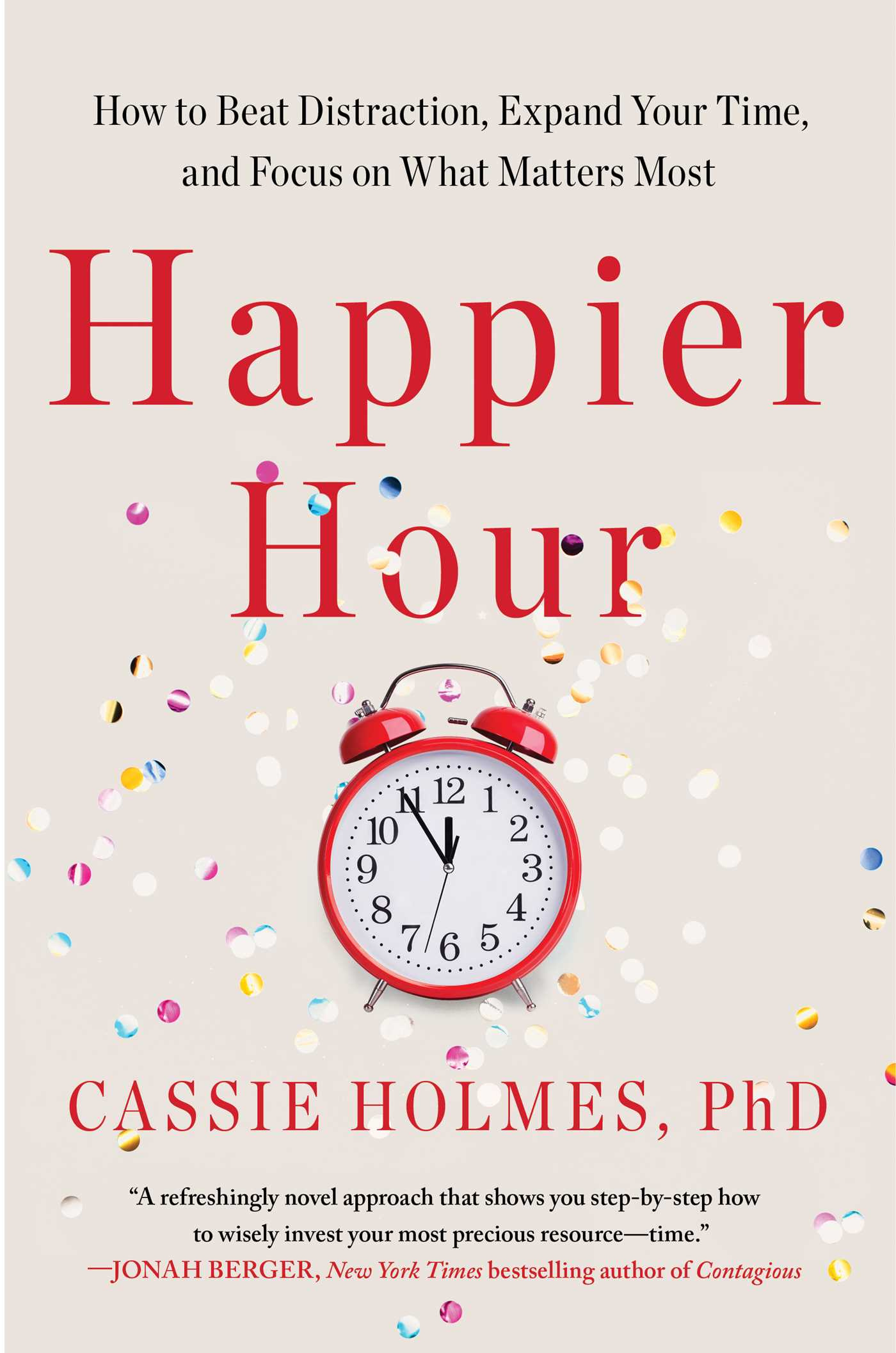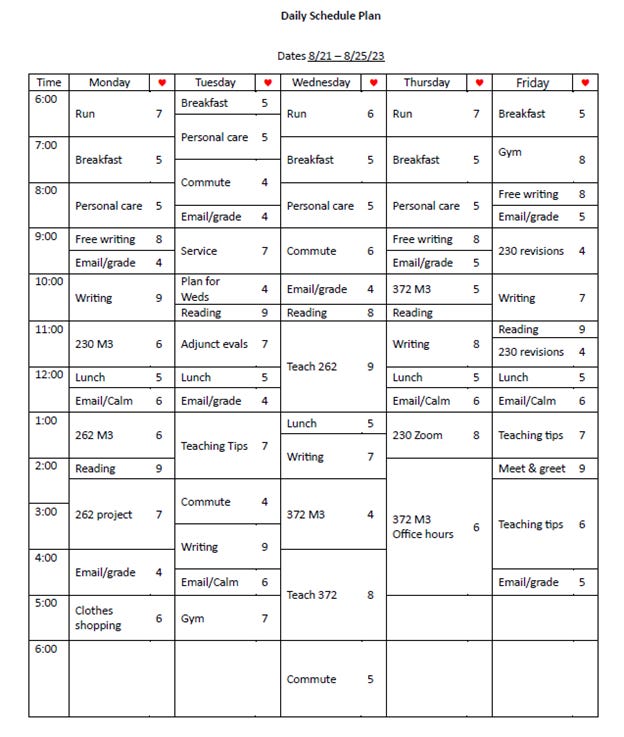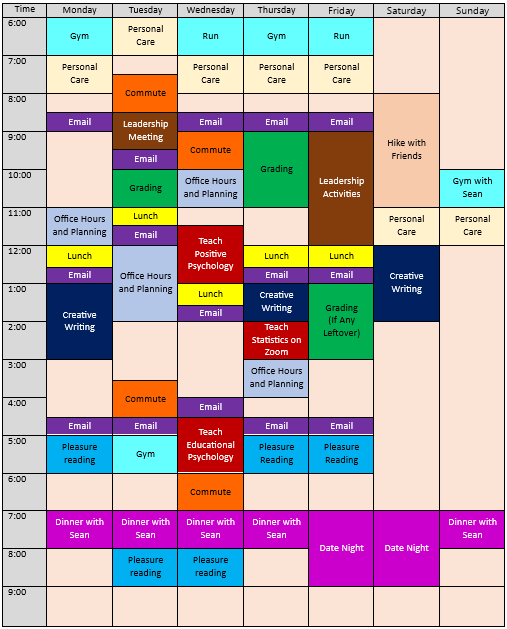Penciling In Time for Joy
Happier Hour: How to Beat Distraction, Expand Your Time, and Focus on What Matters Most by Cassie Holmes, PhD
You might say I am in my book-reading era. And more than once, I have been on the receiving end of the comment, “It must be nice to have time to read.” Funnily enough, I remember saying this exact statement to others in the past.
I once coached a kindergarten teacher to take a two-minute time-out each day to breathe with her students. She snapped back, “I don’t have two minutes during the school day to breathe!” I was once that kindergarten teacher, too.
So, I can relate to what author Cassie Holmes describes as feeling time poor in her book Happier Hour: How to Beat Distraction, Expand Your Time, and Focus on What Matters Most. But, after picking up Holmes’s book last year, I have been on a time crafting journey on the path to feeling more time affluent.
Years ago, I attended a workshop about time management that basically involved prioritizing tasks in three categories (A=essential, immediate, B = Important, but not urgent, and C = worth doing when time is available). The workshop was mildly helpful, but really only focused on productivity.
Happier Hour is less about time management and more about life management using time as an organizing principle. Holmes, a social psychologist and professor at UCLA’s Anderson School of Management, teaches an MBA course entitled Applying the Science of Happiness to Life Design. Happier Hour offers that graduate-level course in a book that is easy to digest and implement for all.
“So the real answer is not about being time rich; it’s about making the time you have rich.” (p.11)
Where does the time go?
One step Holmes recommends towards the start of the book is to engage in a one- to two-week time tracking exercise. This involves creating a time tracking sheet, logging tasks and activities, and rating their enjoyment on a scale from 1 (low) to 10 (high). I completed this activity in August of last year:
The time-tracking process helps to identify the activities that bring us the greatest joy in order to intentionally plan for pleasure and satisfaction in life. It also may expose the time we waste on activities that, in the end, aren’t necessary and don’t actually make us happier (think doom scrolling here).
But wait, there’s more . . .
Holmes then goes on to provide several chapters worth of strategies to improve how we experience our lives in relation to time. For example, Holmes shares information on how to use feelings of awe to expand our sense of time. She also recommends bundling less-desired activities with more enjoyable ones to make for happier hours. Instructions for turning routines into rituals are also provided.
In the chapter entitled Driven to Distraction, Holmes provides the following steps for how to shift from “doing mode” to “being mode”:
Treat your weekend like a vacation. (This is self-explanatory!)
Practice by meditating. Being able to ignore distractions and be in the moment is developed over time through practice.
Shut the door. It’s important to set up your physical space to keep distractions at bay (e.g., clear your space of work cues, clear your actual schedule for a few hours, close out of e-mail).
Put your phone away. Phones are enemy #1 for “being” as opposed to “doing.”
Throughout the book there are references to the time suck of social media scrolling. Holmes decries on-demand everything as being a source of angst. On our phones we are witness to a world of opportunities, only a fraction of which can be completed in any one lifetime. Holmes sums up, “By constantly keeping us apprised of all the desirable things that others are doing and we could be doing, social media compiles an unreasonable list of activities for our days.”
The art of time crafting
In the latter part of the book, after the reader has been shown how to experience more joy within the time one has, Holmes elegantly presents a process called time crafting. She uses the metaphor of creating a mosaic on a canvas to show how we can artistically plan our days.
The four steps to time crafting, as well as example of my mosaic-in-progress, is below:
Set your already set tiles. These are required activities with pre-scheduled times. (e.g., Teach Positive Psychology, Leadership Meeting)
Place your joyful tiles first. Once requirements are in place, prioritize joy. (Pleasure Reading, Date Night, Hike with Friends)
Leave some space. Have time to breathe and be flexible, but color them in to represent reserved time. (See roomy blank spaces below)
Sequence your tiles. Organize activities to work for you. Fill in all other activities that aren’t necessarily joyous or have a specific time slot. (Grading, Email)
I am greatly oversimplifying this process. Holmes recommends 18 time-crafting strategies for creating the mosaic. For anyone interested in making the most out of their hours, I highly recommend this book.
“In recognizing the importance of endings, I offer you a new beginning. You have many hours, days, and years ahead of you, waiting to be lived. Spend on what brings you joy. Invest in what will help you fulfill your purpose. Don’t miss out either by not dedicating the time or by not paying attention during this time. Avoid this life regret. Focus on what’s good. (p. 239)
P.S. Here are the time-tracking logs I created if you would like to take time tracking out for a spin:








